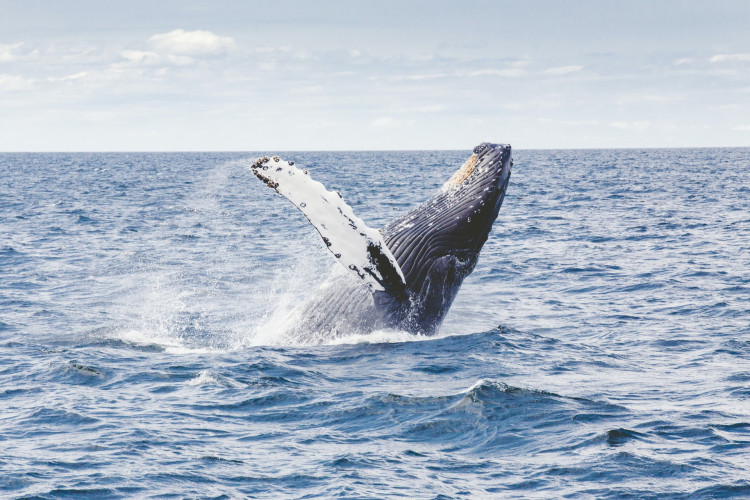A new study has revealed that humpback whales can swim up to 3,700 miles (5,955 kilometers) for the chance to mate.
Humpback whales (Megaptera novaeangliae) may be found in all of the world's oceans. Those in the North Pacific normally spend their summers grazing around Alaska and Canada before moving south for breeding in the winter to waters near Mexico and Hawaii.
Previously, scientists assumed that the whales chose either Mexico or Hawaii as a breeding location. However, some evidence suggests that the two groups may mix, such as shared whale songs.
To monitor the whales, scientists reviewed a database of over 450,000 images of whales in the wild. During the mating season, some would swim thousands of miles.
Two males, identified by marks on their tails, were discovered less than two months apart in two popular breeding locations. The first was about 3,700 (5,955 kilometers) miles off the western coast of Mexico, while the second was near Hawaii .
The whales must have swum faster than their normal cruising pace of 2.5 miles (5 kilometers) per hour to get there, based on the timing.
"Our first reaction was, 'You've got to be kidding me!'" James Darling of the Whale Trust Maui in Hawaii and an author on the study told the New Scientist magazine.
"They might just be traveling the ocean like it's their own backyard," he added.
Previously, scientists assumed they would only choose one mating spot. However, based on the unique tail marks, the scientists determined that one male traveled 2,824 miles (4,545 km) between Feb. 23 and Apr. 16 2006 from Maui, Hawaii, to the Revillagigedo Archipelago of Mexico.
The second traveled 3,693 miles (5,944 km) in the opposite direction, from Guerrero, Mexico, to Maui between Feb. 16 and Apr. 5, 2018.
According to New Scientist, he was one of seven males who pursued a single female there. Darling told the site that there's no reason to believe females wouldn't do the same.
Whales typically travel at a speed of roughly 2.5 miles per hour, according to Darling. Even if these whales were photographed on the identical dates of their departure and arrival, computations show that they were swimming far quicker.
Darling, said the findings show that there are numerous overlapping groups of whales in the north-east Pacific, rather than independent populations. The findings also call into doubt guidelines governing the protected status of whales, he claims.
Whales overwintering in Mexico, for example, have been classified as endangered since the 1990s, whereas those overwintering in Hawaii have been classified as "not at risk."
The findings were published in the peer-reviewed journal Biology Letters on Wednesday.






